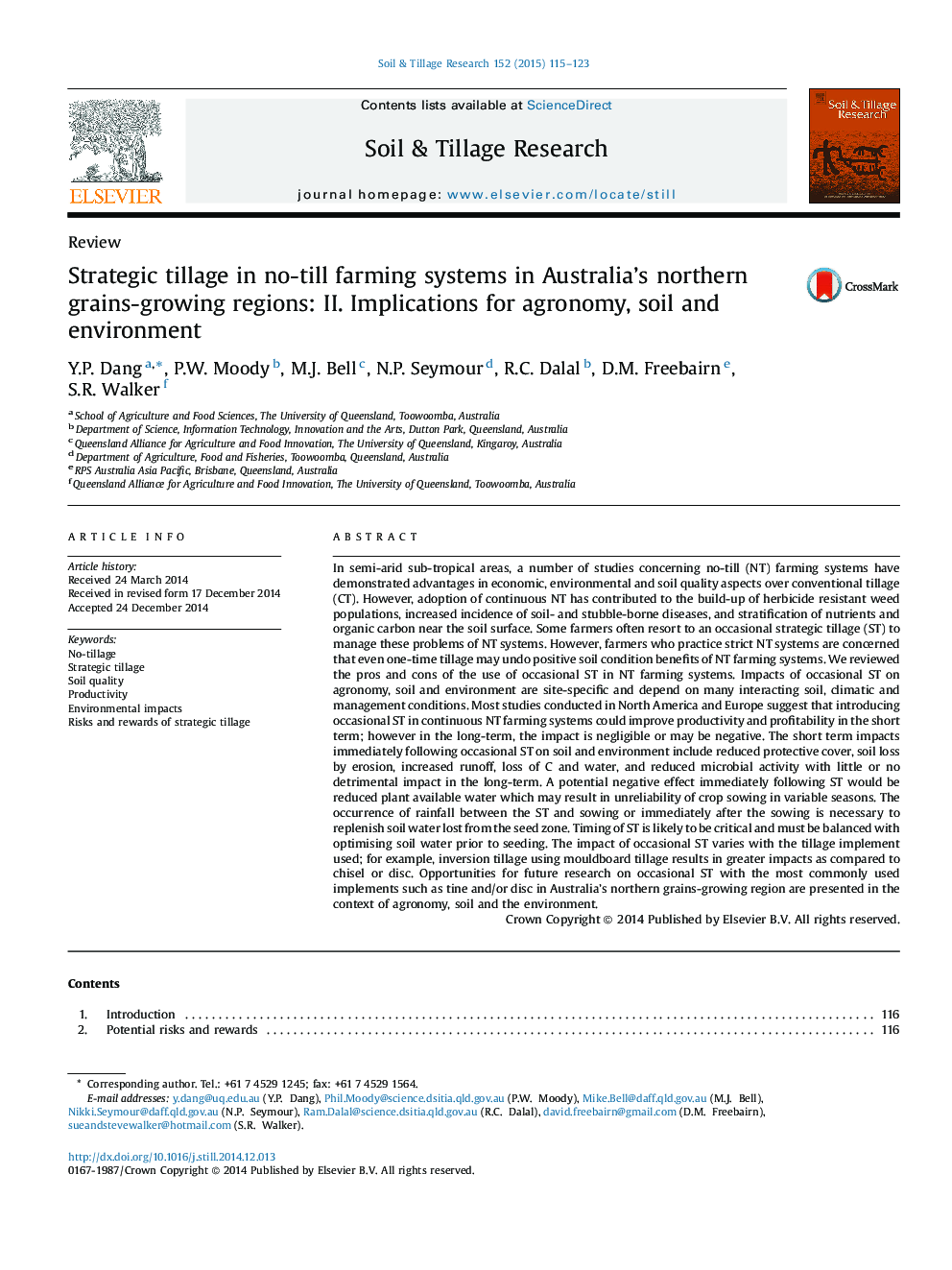| کد مقاله | کد نشریه | سال انتشار | مقاله انگلیسی | نسخه تمام متن |
|---|---|---|---|---|
| 305547 | 513033 | 2015 | 9 صفحه PDF | دانلود رایگان |

• We reviewed pros and cons of the use of strategic tillage (ST) in no-till farming systems.
• Impacts of ST are site-specific and depend on many interacting soil, climatic and management conditions.
• Introducing ST could improve productivity in short term with no or negative impact in long-term.
• In short-term, ST could reduce protective cover, soil loss, microbial activity, C and moisture.
• Impact of ST varies with the tillage implement used.
In semi-arid sub-tropical areas, a number of studies concerning no-till (NT) farming systems have demonstrated advantages in economic, environmental and soil quality aspects over conventional tillage (CT). However, adoption of continuous NT has contributed to the build-up of herbicide resistant weed populations, increased incidence of soil- and stubble-borne diseases, and stratification of nutrients and organic carbon near the soil surface. Some farmers often resort to an occasional strategic tillage (ST) to manage these problems of NT systems. However, farmers who practice strict NT systems are concerned that even one-time tillage may undo positive soil condition benefits of NT farming systems. We reviewed the pros and cons of the use of occasional ST in NT farming systems. Impacts of occasional ST on agronomy, soil and environment are site-specific and depend on many interacting soil, climatic and management conditions. Most studies conducted in North America and Europe suggest that introducing occasional ST in continuous NT farming systems could improve productivity and profitability in the short term; however in the long-term, the impact is negligible or may be negative. The short term impacts immediately following occasional ST on soil and environment include reduced protective cover, soil loss by erosion, increased runoff, loss of C and water, and reduced microbial activity with little or no detrimental impact in the long-term. A potential negative effect immediately following ST would be reduced plant available water which may result in unreliability of crop sowing in variable seasons. The occurrence of rainfall between the ST and sowing or immediately after the sowing is necessary to replenish soil water lost from the seed zone. Timing of ST is likely to be critical and must be balanced with optimising soil water prior to seeding. The impact of occasional ST varies with the tillage implement used; for example, inversion tillage using mouldboard tillage results in greater impacts as compared to chisel or disc. Opportunities for future research on occasional ST with the most commonly used implements such as tine and/or disc in Australia’s northern grains-growing region are presented in the context of agronomy, soil and the environment.
Journal: Soil and Tillage Research - Volume 152, September 2015, Pages 115–123